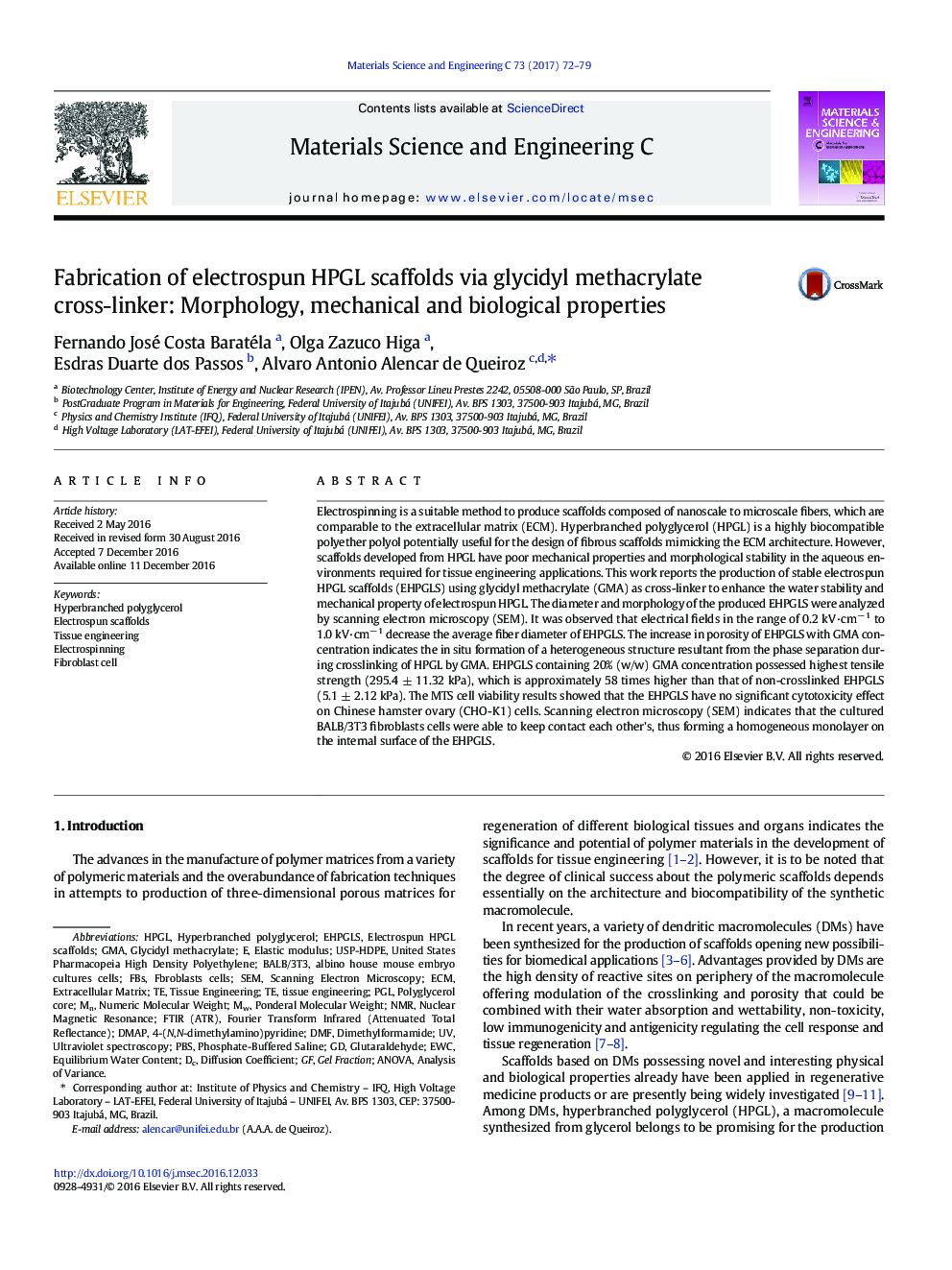| کد مقاله | کد نشریه | سال انتشار | مقاله انگلیسی | نسخه تمام متن |
|---|---|---|---|---|
| 5434907 | 1509148 | 2017 | 8 صفحه PDF | دانلود رایگان |

- A hyperbranched polyglycerol (HPGL) scaffold with elastic modulus of 295.4 ± 11.32 kPa was developed for soft tissue repair.
- HPGL scaffold was prepared by electrospinning method.
- The porosity of HPGL scaffolds can be tuned by selecting the degree of GMA in HPGL.
- Electrospun HPGL scaffolds favored fibroblast adhesion and proliferation.
Electrospinning is a suitable method to produce scaffolds composed of nanoscale to microscale fibers, which are comparable to the extracellular matrix (ECM). Hyperbranched polyglycerol (HPGL) is a highly biocompatible polyether polyol potentially useful for the design of fibrous scaffolds mimicking the ECM architecture. However, scaffolds developed from HPGL have poor mechanical properties and morphological stability in the aqueous environments required for tissue engineering applications. This work reports the production of stable electrospun HPGL scaffolds (EHPGLS) using glycidyl methacrylate (GMA) as cross-linker to enhance the water stability and mechanical property of electrospun HPGL. The diameter and morphology of the produced EHPGLS were analyzed by scanning electron microscopy (SEM). It was observed that electrical fields in the range of 0.2 kV·cmâ 1 to 1.0 kV·cmâ 1 decrease the average fiber diameter of EHPGLS. The increase in porosity of EHPGLS with GMA concentration indicates the in situ formation of a heterogeneous structure resultant from the phase separation during crosslinking of HPGL by GMA. EHPGLS containing 20% (w/w) GMA concentration possessed highest tensile strength (295.4 ± 11.32 kPa), which is approximately 58 times higher than that of non-crosslinked EHPGLS (5.1 ± 2.12 kPa). The MTS cell viability results showed that the EHPGLS have no significant cytotoxicity effect on Chinese hamster ovary (CHO-K1) cells. Scanning electron microscopy (SEM) indicates that the cultured BALB/3T3 fibroblasts cells were able to keep contact each other's, thus forming a homogeneous monolayer on the internal surface of the EHPGLS.
166
Journal: Materials Science and Engineering: C - Volume 73, 1 April 2017, Pages 72-79